Unanimated – In the Light of Darkness review — Recently reunited Swedish melodic death metal pioneers come close, but fall flat. This one will not stand with the BEHERIT-like triumphs of 2009.
No CommentsDefining metal
People don’t understand that inaction is a form of action. They like to act against anyone who changes their default expectation. They’ll call that person a fascist or a control freak, blind to how they are trying to control as well — just passively.

And if there’s one thing that’s un-metal, it’s passivity.
Here’s a conversation I had recently:
Me:Wolves In the Throne Room isn’t black metal per se. It’s like indie shoegaze with a black metal influence.
Other Dude:Who are you to say what is or isn’t black metal?
Me:So you’re saying Wolves in the Throne Room is black metal?
Other Dude:Yes.
Me:So in other words, you’re telling me what is black metal?
Other Dude:Yes.
Me:And by extension, you’re also going to tell me what is not black metal, if it’s not on the list of what you say is black metal?
Other Dude:Well yeah but
Me:So you’re doing the exact same thing you accuse me of.
Other Dude:I think most people would say Wolves in the Throne Room is black metal.
Me:But in addition to that, you’re telling me what is and is not black metal? Yes or no please.
Source: /r/metal
I’ve had this discussion more times that I can safely recall without vomiting. The crowd assumes that if they’re not the one making the assertion, they’re not telling you what to do — when, whether they’re hiding behind the skirts of “what everyone thinks” or not, they’re doing exactly that.

The poetry of metal
Writing good lyrics is part of having a complete song. In my view, a bad song with good lyrics is still bad, but a good song with bad lyrics is going to get listened to less because people want to avoid hearing the verbal stupidity. Metal has some amazing lyricists among its ranks.
Here’s one of my favorites:
Far away from civilization
A secret farm full of obscure persons
And full of weak cattle exists
Every morning the farmfather
Satisfied himself with the cattle
SODOMIZE THE WEAK creatures
Fatigo – it’s an everflowing plague
No escape from the penis of dead
No hope for all the dead chicks
Crucio – the same procedure everyday
The same thing the whole night
Sometimes, when travellers enter the farm
They won’t return from those pervert people
Get strangulated by the evil farmers
Get buried somewhere in the desert aroundhttp://www.metal-archives.com/viewlyrics.php?id=84385
I wish someone would translate it to English, but it says it all. The metaphor is so rich, thick with nuance, and the language in protean contortions mimics the world it describes. If you’re a fan of 13th century Sicilian poetry, you’ll notice the sequential repetition of concept, which was considered desirable in that art form. Blending old and new, in a nod to our great living poets, its use of language in flux defines this as a top-notch work of poetry.

Virgil – The Aeneid
Among the superb examples of classic literature produced by the once rich and productive european culture; amidst the works of a fecund civilization that have left a permanent mark on the subsequent generations, proving their relevance in all eras of human history; touching topics that are so eternal and defining of our humanity, such as the neverending strife for life on all levels; among all those works, very few pieces of writing (and art) can reach the heights of Virgil’s masterwork, the culmination of a lifetime of work and self-improving in the field of the written word.
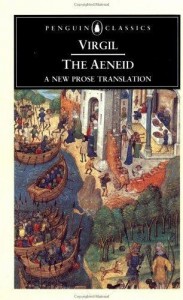 The intention with this review, less than providing a synthesis of the book’s argument, which can be found anywhere else on the Internet, is to give the reader what we believe is the central message of such a story in a short and concise manner so you can pick the book and explore the depths of its message for yourself.
The intention with this review, less than providing a synthesis of the book’s argument, which can be found anywhere else on the Internet, is to give the reader what we believe is the central message of such a story in a short and concise manner so you can pick the book and explore the depths of its message for yourself.
The main subject of the story is the overcoming of difficulties and the strife for better conditions of living, or a better future. In the example of a group of survivors from the destruction of the legendary Troy, them lead by the fearless and noble warrior Aeneas, as they go through a series of awful calamities one after the other, with nothing but the promise of a bright future that the mentioned group of people won’t even see for themselves, but which will be enjoyed by their descendants, the future patricians that would build the greatest civilization known to man, Virgil gives us the best example of the glory and the rewards of reaching new heights by conquering difficulties.
It is this argument that best reflects that condition of human life that modern people try so hard to hide or run away from: the unescapable fact that, if we want the good things in life, we need to make some effort to get them. Not just some meager effort, but a serious one, since calamities, the only sure things in life, and the ones that come most easily, will get in the way of our dreams. Such calamities may come in many forms: the death of a close one, the sabotage made on us by envious people, the crash of the financial market, or a meteor falling through your roof and into your room – it doesn’t matter. They are as real as the air you breath (“only death is real”, indeed) and you will need to face and go through many of them if you want to get some of the sweet fruits that the tree of life offers.
Despite the universality of its message, I feel this book applies specially to hessians and the hard path in life they choose to take. As modern warriors, wandering as misunderstood entities in the maelstrom of modern life, the analogy with the wandering trojans is self-evident. So, even thought this story doesn’t depict long haired dudes with beer guts, it fits the metalhead persona like a glove.
Grab this and learn the joy of surviving the brutal game of life, the hessian way.
No CommentsTags: zine-books
Forbidden – Twisted Into Form

A late addition to the pantheon of great Speed Metal albums, Twisted Into Form salvages its importance from the dying days of the genre by pushing those exhausted conventions to their limits. The historical and ideological positioning of this album does render their musical ancestry quite prominently. Forbidden did not come from the same school of Metal that imported influences of more radical dissidence such as Hardcore Punk and Thrash as well as morbid and occult imagery. These are what contributed to separating albums like Hell Awaits and Seven Churches from the Speed and Heavy Metal world, laying the foundations for the more vivid and nightmarish Death Metal sound to come. Instead, Twisted Into Form encapsulates and advances on the spirit of individualism inherited from music going back as far as late 70′s Judas Priest to Fates Warning and Metallica. The album itself is a relentlessly searching affair, a quest for mental strength and autonomy in a world of the blind acceptance of pleasant illusions. Melodies shift between different textural assaults, retaining an expressive sense of narrative from a maze of neoclassical shredding that fractalises its parts. This could have been dumbed down by the standard cyclic structure of many of the songs were it not for the mind-warping finesse that sits somewhere between Master of Puppets and Gorguts’ The Erosion of Sanity via. an inversion of Voivod’s Dimension Hatross, being so typical of this cerebrocentric approach to riffcraft. The vocals play an important role in having the melodic acumen to bring some more direction to the music between and during choruses, which is crucial when it’s shifting so disorientatingly within a fairly simple framework that doesn’t always resolve itself instrumentally. Perhaps released a year too late, it’s still Forbidden’s best and most influential work, and an insightful, sincere and technically inspiring musical gravestone.
-ObscuraHessian-
No CommentsMotifs and Leitmotifs in Metal
The use of motifs and leitmotifs is very frequent in the musical genres of classical and opera, but we can also find some examples of their use in that furious contemporary “classical” brand of sound making we known as heavy metal. Here we’ll explain what they are and their application in metal music.
The Virginia Tech Multimedia Music Dictionary defines “leitmotif” as follows:
Leitmotif
(LITE-moe-teef)
[Ger., leading motif]A recurring motif in a composition (usually an opera) which represents a specific person, idea, or emotion. This term was first applied to the operas of Richard Wagner.
(…)
Motif
(moe-TEEF)
[Fr.]A short tune or musical figure that characterizes and unifies a composition. It can be of any length, but is usually only a few notes long. A motif can be a melodic, harmonic or rhythmic pattern that is easily recognizable throughout the composition.
A motif (without the “leit-” attached ot it) can be either melodic, rhythmic or harmonic, it doesn’t matter. It must be short in duration, though, and it must contain some importance for the structure of the composition, if not providing the backbone itself. It is not just a casual riff, but a memorable mini-tune around which parts or the whole of the composition depend on.
 Motifs have been used in metal music for all of its existence. In fact, the first motif in the history of the genre is the universally recognizable three-note sequence which is the main riff of the song “Black Sabbath” by the band of the same name. What would the rest of the song be without it? Like this transcendental example, motifs are the norm, rather than the exception, in metal.
Motifs have been used in metal music for all of its existence. In fact, the first motif in the history of the genre is the universally recognizable three-note sequence which is the main riff of the song “Black Sabbath” by the band of the same name. What would the rest of the song be without it? Like this transcendental example, motifs are the norm, rather than the exception, in metal.
Leitmotifs, on the other hand, are motifs that are recurrent in an entire composition or album, and serve to return our minds to a particular feeling or idea. As such, these are not restricted to a single song, but frequently reappear on an album or entire work to reminds us of the object the motif evokes. An entire composition structured around leitmotifs is, then, rather than a collection of individual songs, a unit, or a large song composed itself of songs.
Leitmotifs are famously associated with opera composer Richard Wagner. Its use in metal isn’t much of a recurring happening, nor its full potential been exploited so far, but I can name a few examples of its use that will immediately ring the bell of any devoted hessian:
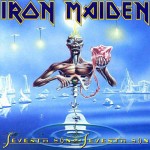 The acoustic short piece used as both intro and outro of Iron Maiden’s “Seventh Son of a Seventh Son” album.
The acoustic short piece used as both intro and outro of Iron Maiden’s “Seventh Son of a Seventh Son” album.
– Listen to the album’s intro on mp3: Moonchild (Intro)
– Listen to the album’s outro on mp3: Only The Good Die Young (Outro)
Notice that both differ solely on interpretation. The piece as the outro to the album is played slower and in a more tired fashion compared to the intro. Leitmotifs don’t have to reappear on a composition at exactly the same way all the time – rather the subtle variation between them can create a contrast, which in turn give the listener a feeling that a narration is taking place. Iron Maiden’s 1988 album is a concept work which tells the life of a clairvoyant from birth to death and it makes sense that the outro, with its more dragging mood represents the end of the life of such person.
Another example from the same album are the intro sequences to the title track and the last track. Both are strikingly similar, except that the first is slower and ominous while the second is more upbeat. Notice that the lyrics on the last track of the album show a man resigned to his fate and happy despite of it, so the altered use of the riff from the title track (which could very well be the seventh son’s main motif) makes sense from this standpoint.
– Listen to the intro riff to “Seventh Son of a Seventh Son” on mp3: Seventh Son Of A Seventh Son (Intro)
– Listen to the intro riff to “Only the Good Die Young” on mp3: Only The Good Die Young (Intro)
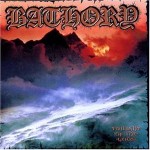 Bathory, in its viking era, used a number of leitmotifs in its music and particularly in the “Twilight of the Gods” album. Here is but one example:
Bathory, in its viking era, used a number of leitmotifs in its music and particularly in the “Twilight of the Gods” album. Here is but one example:
– Listen to the intro sequence of “Through Blood by Thunder” on mp3: Through Blood by Thunder (Intro)
– Listen to the intro sequence of “Blood and Iron” on mp3: Blood and Iron (Intro)
Two different intros with the same motif attached to them. If you have the album, you can also notice how the intro to “Blood and Iron” further develops until it turns into the main motif of the song, which carries it to its end. It is not unusual to slowly turn one motif into another – Wagner did that on his operas, particularly in the transition between scenes 1 and 2 of “Das Rheingold”.
– Listen to the previous motif developing into the main motif of “Blood and Iron” on mp3: Through Blood by Thunder (Motif Development)
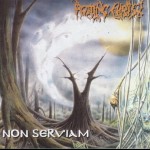 A small example of an implied leitmotif that gets displayed on its full extension later on the album is to be found on Rotting Christ’s “Non Serviam”.
A small example of an implied leitmotif that gets displayed on its full extension later on the album is to be found on Rotting Christ’s “Non Serviam”.
– Listen to an excerpt from “Mephesis Of Black Crystal” on mp3 (the implied leitmotif):
– Listen to an excerpt from “Saturn Unlock Avey’s Son” on mp3 (the full leitmotif):
These were only a few examples. Notice that the use of leitmotifs isn’t just restricted to concept albums. See how many more you can find on your CDs.
To learn more about leitmotifs, visit this excellent link: Leitmotifs in Der Ring des Nibelungen – an introduction.
No CommentsTags: zine-articles
A year in Norwegian metal – a purgatory of recombinations
Mord – Necrosodomic Abyss
Satyricon – The Age of Nero
Throne of Katarsis – Helvete – Det Iskalde Mørket
Aura Noir – Hades Rises
Celestial Bloodshed – Cursed, Scarred and Forever Possessed
Keep of Kalessin – Kolosus
Blood Red Throne – Souls of Damnation
1349 – Revelations of the Black Flame
Mare – Throne of the Thirteenth Witch EP
Mord – Necrosodomic Abyss
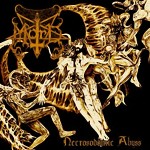 The new Osmose recruits Mord seem to have been actually born in Poland, then relocated to near Kristiansand, which is remembered as the location of a violent death metal sect in support of Varg Vikernes back in 1991 and the origin of Tchort (Blood Red Throne, Emperor, Green Carnation). Not quite living up to the bloody and progressive traditions of the area, Mord specializes in a cold, modern, thrashed-out black metal sound that could scientifically have been developed in a norsecore factory to create an endless amount of productive clones. Maybe because they are originally from Poland, they do seem to possess a better grasp of what makes Nordic black metal good than most Scandinavians around exhibit. They keep the album vile and to the point, imitating the blasphemous rhythm guitar of, besides Euronymous, Ivar Bjørnson during the phase of Enslaved when they dropped most of their classical influence and switched to riff rock. Later Ancient springs to mind in tracks such as “Opus II” which is essentially is a meeting of pop and black metal in a graveyard infested with drunked teenagers who wear makeup and like to flash stupid expressions in photos. It may sound bad but in fact, as guitar rock or something, it excels. It is simply lacking in the Romantic nature worship, warrior ideology and mysticism of Burzum, Ildjarn and the other greats. So while musically this has potential for an above average Norwegian black metal album (even though these ideas are 15 years late) it ends up as one more relic that brings black metal closer to mainstream acceptance and youth culture phenomena today, and no-one will remember it in ten years.
The new Osmose recruits Mord seem to have been actually born in Poland, then relocated to near Kristiansand, which is remembered as the location of a violent death metal sect in support of Varg Vikernes back in 1991 and the origin of Tchort (Blood Red Throne, Emperor, Green Carnation). Not quite living up to the bloody and progressive traditions of the area, Mord specializes in a cold, modern, thrashed-out black metal sound that could scientifically have been developed in a norsecore factory to create an endless amount of productive clones. Maybe because they are originally from Poland, they do seem to possess a better grasp of what makes Nordic black metal good than most Scandinavians around exhibit. They keep the album vile and to the point, imitating the blasphemous rhythm guitar of, besides Euronymous, Ivar Bjørnson during the phase of Enslaved when they dropped most of their classical influence and switched to riff rock. Later Ancient springs to mind in tracks such as “Opus II” which is essentially is a meeting of pop and black metal in a graveyard infested with drunked teenagers who wear makeup and like to flash stupid expressions in photos. It may sound bad but in fact, as guitar rock or something, it excels. It is simply lacking in the Romantic nature worship, warrior ideology and mysticism of Burzum, Ildjarn and the other greats. So while musically this has potential for an above average Norwegian black metal album (even though these ideas are 15 years late) it ends up as one more relic that brings black metal closer to mainstream acceptance and youth culture phenomena today, and no-one will remember it in ten years.
Satyricon – The Age of Nero
![]() It should be obvious to anyone with even the slightest exposure to black metal music and ideas that while it’s arguable that he ever was a genius, for the last decade Satyricon has really gone far out of his way to create the most crowd pleasing, catchy, insipid rock’n’roll version of black metal. It sounds quite redundant to say in 2009 that this kind of music is abhorrent to “Euronymous’ ideals” or the Weltanschauung of the scene that existed in 1991-95 but I can’t help it. This is simply so far from anything that was great in old Norwegian black metal, what made me and so many others interested and follow the events and music with awe inspired by mystique. In this music there is no trace of passion, only of pure professional approach to musicianship and studio production, not even oriented to mastery of the style (in jazz sense) but to a desire to make money and gain profit. This sort of capitalist black metal makes for a new genre in itself. Mechanical, vapid and outdated, it mostly sounds like a collection of random groove metal tunes given a superficial black metal treatment (raped by the half beaten corpse of norsecore) for the mainstream listeners who want to get a piece of black metal’s evil but refuse to go all the way to possession. Precise riffs and metronomic drumming approach Rammstein-like monotony as they are arranged into the laziest sequence and development imaginable. Frost’s sometimes interesting drumscapes have been lost to the adult contemporary studio values and his fans are probably better off listening to 1349 or one of the other bands he plays/played in. Satyr is not trying to play Voivod riffs anymore (as he was doing in Rebel Extravaganza) nor can he duplicate the fast thrashy parts of Nemesis Divina – these new riffs by Satyr have a habit of getting old before the song is over.
It should be obvious to anyone with even the slightest exposure to black metal music and ideas that while it’s arguable that he ever was a genius, for the last decade Satyricon has really gone far out of his way to create the most crowd pleasing, catchy, insipid rock’n’roll version of black metal. It sounds quite redundant to say in 2009 that this kind of music is abhorrent to “Euronymous’ ideals” or the Weltanschauung of the scene that existed in 1991-95 but I can’t help it. This is simply so far from anything that was great in old Norwegian black metal, what made me and so many others interested and follow the events and music with awe inspired by mystique. In this music there is no trace of passion, only of pure professional approach to musicianship and studio production, not even oriented to mastery of the style (in jazz sense) but to a desire to make money and gain profit. This sort of capitalist black metal makes for a new genre in itself. Mechanical, vapid and outdated, it mostly sounds like a collection of random groove metal tunes given a superficial black metal treatment (raped by the half beaten corpse of norsecore) for the mainstream listeners who want to get a piece of black metal’s evil but refuse to go all the way to possession. Precise riffs and metronomic drumming approach Rammstein-like monotony as they are arranged into the laziest sequence and development imaginable. Frost’s sometimes interesting drumscapes have been lost to the adult contemporary studio values and his fans are probably better off listening to 1349 or one of the other bands he plays/played in. Satyr is not trying to play Voivod riffs anymore (as he was doing in Rebel Extravaganza) nor can he duplicate the fast thrashy parts of Nemesis Divina – these new riffs by Satyr have a habit of getting old before the song is over.
Throne of Katarsis – Helvete – Det Iskalde Mørket
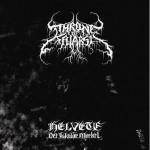 While the gloomy shroud of 21st century black metal clichés weighs like lead upon Throne of Katarsis, a sense of ambition and greatness, the carefully followed tread of frozen melody including an airy vastness copied from In the Nightside Eclipse or early Taake and some elegant and progressive forms makes this rise above the level of total weakness. Like Isvind and Tsjuder, Throne of Katarsis explore the melodic territory in between Darkthrone and Emperor in an effort to replicate the impression of transcendent evil boiling in the depths. Fast percussion underlies the sonic depression of dubiously plodding, soaring but monotone and unenergetic low production (Grieghallen copy) guitars repeating spherical themes (rotating the minor chords “De Mysteriis” style during the slow parts over and over again to give the melancholic feeling) over to vastness. The best of the musical ideas are hidden by the desire to create a standard black metal album, as they probably succumbed to creating an album too quickly and thinking that it’s enough to put out cold and intensity-devouring two-penny riffs that have been overused for 20 years – bulk Norwegian black metal in good and bad.
While the gloomy shroud of 21st century black metal clichés weighs like lead upon Throne of Katarsis, a sense of ambition and greatness, the carefully followed tread of frozen melody including an airy vastness copied from In the Nightside Eclipse or early Taake and some elegant and progressive forms makes this rise above the level of total weakness. Like Isvind and Tsjuder, Throne of Katarsis explore the melodic territory in between Darkthrone and Emperor in an effort to replicate the impression of transcendent evil boiling in the depths. Fast percussion underlies the sonic depression of dubiously plodding, soaring but monotone and unenergetic low production (Grieghallen copy) guitars repeating spherical themes (rotating the minor chords “De Mysteriis” style during the slow parts over and over again to give the melancholic feeling) over to vastness. The best of the musical ideas are hidden by the desire to create a standard black metal album, as they probably succumbed to creating an album too quickly and thinking that it’s enough to put out cold and intensity-devouring two-penny riffs that have been overused for 20 years – bulk Norwegian black metal in good and bad.
Aura Noir – Hades Rise
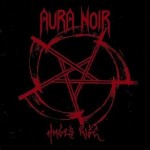 I do remember the Apollyon/Aggressor duo Aura Noir as a high-energy, motor powered and tradition respecting black metal cult from the days of the bewitching “Dreams Like Deserts” MCD, never afraid to rock out nor experiment with unusual guitar and drum techniques – even cross-quoting with Ved Buens Ende material. Something really devastating has happened and I don’t know if it has to do with Aggressor’s falling down from a balcony or something, but they sound totally drunk, tired and old on this album. I mean, if you think that Darkthrone nowadays sounds like a lazy beer-swilling band from the pub, try this one! I can hear they are trying to play like Sodom, but I can’t hear any Germanic “raaaaaah!” mania. I can hear Autopsy, but I can’t hear the stinking amputated corpses rising all around to wreak their vengeance upon the societies of the living. I can hear hardcore, but I can’t hear the decisive violent power of wrath against conformity. So, what is there left? It sounds a bit Southern Lord-y – you know, ironic old metal fan hipster who likes to get stoned out of his mind and listen to feel-good old-times metal. By the way, the drum production sounds like MIDI – utter failure. If you want real speed/black metal power, go for the originals, this one is a weak joke.
I do remember the Apollyon/Aggressor duo Aura Noir as a high-energy, motor powered and tradition respecting black metal cult from the days of the bewitching “Dreams Like Deserts” MCD, never afraid to rock out nor experiment with unusual guitar and drum techniques – even cross-quoting with Ved Buens Ende material. Something really devastating has happened and I don’t know if it has to do with Aggressor’s falling down from a balcony or something, but they sound totally drunk, tired and old on this album. I mean, if you think that Darkthrone nowadays sounds like a lazy beer-swilling band from the pub, try this one! I can hear they are trying to play like Sodom, but I can’t hear any Germanic “raaaaaah!” mania. I can hear Autopsy, but I can’t hear the stinking amputated corpses rising all around to wreak their vengeance upon the societies of the living. I can hear hardcore, but I can’t hear the decisive violent power of wrath against conformity. So, what is there left? It sounds a bit Southern Lord-y – you know, ironic old metal fan hipster who likes to get stoned out of his mind and listen to feel-good old-times metal. By the way, the drum production sounds like MIDI – utter failure. If you want real speed/black metal power, go for the originals, this one is a weak joke.
Celestial Bloodshed – Cursed, Scarred and Forever Possessed
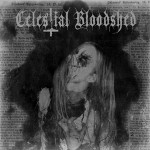 It would be quite interesting to see if someone, somewhere in Norway, has during the year released black metal or death metal which does not a) try to duplicate the old Grieghallen soundscape with in the most generic no-sense-of-style manner, b) fill their album with a load of budget riffs called depressive black metal by the kids (which is actually C, D, E minor again… and again…). Anyway, while Celestial Bloodshed has ripped off these ideas from better bands, they are 50% better in their songcraft than Watain, Funeral Mist and other generic black metal of the era. Also, they have been able to create inner beauty towards the realization of the music in melodic intensity. Additionally, the fullness of the soundscape and the implications of the structure make this release more grim, oppressive and grinding than the mainsteam manipulations of Norwegian metal which can not be but a good thing. After a beautiful intro which sounds somewhat like one of the demos from Equimanthorn (Absu members’ ritual project) the album pounds into a lexicon of guitar techniques borrowed from a range of musicians from Mayhem to Enslaved, with a dynamic range from slow romantic soulseeking to blasphemous speeds, sometimes bridged with jarring changes, while death metal influenced vicious, likeable and personal (down to some insistent mannerisms) vocals pace like hammer upon an anvil the grim predictions of mortal future and the drummer operates battery like Faust and Hellhammer used to in the early 90′s. While all of this is not fully developed yet into pure communication, it speaks with instant, amazed, satanic impressions of life facing the darkness of Infinity – Celestial Bloodshed has replicated the old school with care, honesty and vicious intent.
It would be quite interesting to see if someone, somewhere in Norway, has during the year released black metal or death metal which does not a) try to duplicate the old Grieghallen soundscape with in the most generic no-sense-of-style manner, b) fill their album with a load of budget riffs called depressive black metal by the kids (which is actually C, D, E minor again… and again…). Anyway, while Celestial Bloodshed has ripped off these ideas from better bands, they are 50% better in their songcraft than Watain, Funeral Mist and other generic black metal of the era. Also, they have been able to create inner beauty towards the realization of the music in melodic intensity. Additionally, the fullness of the soundscape and the implications of the structure make this release more grim, oppressive and grinding than the mainsteam manipulations of Norwegian metal which can not be but a good thing. After a beautiful intro which sounds somewhat like one of the demos from Equimanthorn (Absu members’ ritual project) the album pounds into a lexicon of guitar techniques borrowed from a range of musicians from Mayhem to Enslaved, with a dynamic range from slow romantic soulseeking to blasphemous speeds, sometimes bridged with jarring changes, while death metal influenced vicious, likeable and personal (down to some insistent mannerisms) vocals pace like hammer upon an anvil the grim predictions of mortal future and the drummer operates battery like Faust and Hellhammer used to in the early 90′s. While all of this is not fully developed yet into pure communication, it speaks with instant, amazed, satanic impressions of life facing the darkness of Infinity – Celestial Bloodshed has replicated the old school with care, honesty and vicious intent.
Keep of Kalessin – Kolosus
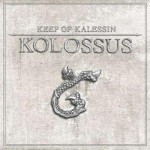 Keep of Kalessin arouse my interest during their demo days, as 1997′s “Skygger av Sorg” repeated the style of old Satyricon in a series of simple, emotional song fragments that revealed a sad beauty lying underneath the grim soundscape. I had heard some less interesting newer material but it is truly shocking what they have submerged into now – an arrogant, over-produced tribute to the honor of Greek warriors through quasi-talented commercial death metal. Synth washes and expressive vocals (in the vein of Nergal when he’s really pissed off in the later Behemoth albums) fill this piece of plastic because they want to sound big and they want to play on a stadium. I am convinced that someone with their musicianship should be able to create a listenable and consistent album, but these super fast blastbeats and commercial heavy metal oriented song dynamics from quiet to loud make this just a faux extreme version of something like Spearhead or Deströyer 666, made worse by the angry shouter vocalist. The people interested only in dry technique and production standards will love this for being an emphatic and empty opera of sharp drumwork and the constantly shifting death metal type fast guitars and entertainment value. They are also happy that it lacks the primal natural force of old Norwegian metal, because it might be distrubing. The sense of space created should be one of a studio or a big venue, instead of a woodland crypt, right? This amount of polishing emphasizes the superficiality of the entire composure, down to metalcore action computer game synchronized by MIDI in Kolossus, where accurate but inconsequential fast drum beats follow cheap-ass tremolo melodies from the pits of norsecore Hell and the vocalist sounds angry at people at the nearby mall and emo pop chorus in “Ascendant” which doesn’t even fit the music underneath. Likewise the arabic solos in the middle part of “Kolossus” don’t seem to have anything to do with the metal riffs, nor do the “300″ soundtrack reminiscent bits with synths and tablas. Whoever has produced this must be a commercial minded jerk.
Keep of Kalessin arouse my interest during their demo days, as 1997′s “Skygger av Sorg” repeated the style of old Satyricon in a series of simple, emotional song fragments that revealed a sad beauty lying underneath the grim soundscape. I had heard some less interesting newer material but it is truly shocking what they have submerged into now – an arrogant, over-produced tribute to the honor of Greek warriors through quasi-talented commercial death metal. Synth washes and expressive vocals (in the vein of Nergal when he’s really pissed off in the later Behemoth albums) fill this piece of plastic because they want to sound big and they want to play on a stadium. I am convinced that someone with their musicianship should be able to create a listenable and consistent album, but these super fast blastbeats and commercial heavy metal oriented song dynamics from quiet to loud make this just a faux extreme version of something like Spearhead or Deströyer 666, made worse by the angry shouter vocalist. The people interested only in dry technique and production standards will love this for being an emphatic and empty opera of sharp drumwork and the constantly shifting death metal type fast guitars and entertainment value. They are also happy that it lacks the primal natural force of old Norwegian metal, because it might be distrubing. The sense of space created should be one of a studio or a big venue, instead of a woodland crypt, right? This amount of polishing emphasizes the superficiality of the entire composure, down to metalcore action computer game synchronized by MIDI in Kolossus, where accurate but inconsequential fast drum beats follow cheap-ass tremolo melodies from the pits of norsecore Hell and the vocalist sounds angry at people at the nearby mall and emo pop chorus in “Ascendant” which doesn’t even fit the music underneath. Likewise the arabic solos in the middle part of “Kolossus” don’t seem to have anything to do with the metal riffs, nor do the “300″ soundtrack reminiscent bits with synths and tablas. Whoever has produced this must be a commercial minded jerk.
Blood Red Throne – Souls of Damnation
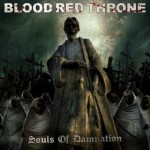 Tchort from Kristiansand was a newcomer to the death metal scene with his band Green Carnation right when the genre went out of fashion because of Euronymous’ hatefulness towards it and while that name was resurrected for Tchort’s progressive metal project he formed the neo-death metal group Blood Red Throne at the end of the millennium. While not having heard the early Green Carnation material, it’s easy to hear from this that some trace of early influence from excellent bands like Grave and Cadaver does exist, but none of their ability to turn basic riff structures into progressive and morbid magic. This type of song construction mostly resembles Cannibal Corpse and Deicide during the latter’s worst days of In Torment In Hell, filling songs with groovy mosh parts, faux-brutal growls and the drummer and bass player (from Deeds of Flesh) insisting wimpily on always playing to the beat of the riff. If this is the king on Norway’s death metal throne since Cadaver disbanded, it is quite sad actually. Most good (death) metal is memorable from its melodies, however convoluted and vicious they may be, but Souls of Damnation is mostly simple rhythmic phrases like guitar exercise patterns for introducing mechanical creation technique for sub-Florida death metal. Like all boring death metal, it severely underestimates its audience. I mean, many listeners do like death metal that sounds like basic no-frills brutal grind, but this worthless chugging goes too far. It seems like the whole album lacks even one interesting melody part or arrangement.
Tchort from Kristiansand was a newcomer to the death metal scene with his band Green Carnation right when the genre went out of fashion because of Euronymous’ hatefulness towards it and while that name was resurrected for Tchort’s progressive metal project he formed the neo-death metal group Blood Red Throne at the end of the millennium. While not having heard the early Green Carnation material, it’s easy to hear from this that some trace of early influence from excellent bands like Grave and Cadaver does exist, but none of their ability to turn basic riff structures into progressive and morbid magic. This type of song construction mostly resembles Cannibal Corpse and Deicide during the latter’s worst days of In Torment In Hell, filling songs with groovy mosh parts, faux-brutal growls and the drummer and bass player (from Deeds of Flesh) insisting wimpily on always playing to the beat of the riff. If this is the king on Norway’s death metal throne since Cadaver disbanded, it is quite sad actually. Most good (death) metal is memorable from its melodies, however convoluted and vicious they may be, but Souls of Damnation is mostly simple rhythmic phrases like guitar exercise patterns for introducing mechanical creation technique for sub-Florida death metal. Like all boring death metal, it severely underestimates its audience. I mean, many listeners do like death metal that sounds like basic no-frills brutal grind, but this worthless chugging goes too far. It seems like the whole album lacks even one interesting melody part or arrangement.
1349 – Revelations of the Black Flame
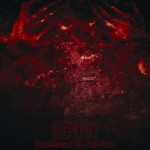 One of the newer Oslo bands mostly known from relentless and uncompromising fast black metal, 1349 surprise with their latest effort in refusing to conform to the rules of the flock. This time conjuring echoes of Samael’s Ceremony of Opposites and later Mayhem, 1349 composes suffocated, devilish and industrial tinged black metal sounds which despite being somewhat predictable, retain the doomy beauty of an industry of inferno. The loneliness of space as described in Moorcock’s trippy novel “The Black Corridor” and the classic fantasy movie “Alien” fill this Gigerian landscape of planets, threats and biomechanical blasphemies. Bodies twitch into contorted positions in a sea of light. The psychedelic feel is enhanced by a cover of Pink Floyd’s “Set the Controls for the Heart of Sun” featuring Tom G. Warrior. Several tracks use minutes to unfold submerged ambient and experimental soundscapes, while there is some Red Harvest type digital manipulation featured in many of the metal songs too. The arrangement is dramatic and regal, with Frost’s drumming skills put to good use. Multiple vocal styles herald the theatrical nature. Some interesting lead guitars add desperate wails to the background. Some parts are in their wicked minimalism close to what one could also expect to, say, Beherit to compose if he were in a more commercial high budget recording project, making this one of the more worthwhile efforts from Norway last year in producing new vistas of black metal.
One of the newer Oslo bands mostly known from relentless and uncompromising fast black metal, 1349 surprise with their latest effort in refusing to conform to the rules of the flock. This time conjuring echoes of Samael’s Ceremony of Opposites and later Mayhem, 1349 composes suffocated, devilish and industrial tinged black metal sounds which despite being somewhat predictable, retain the doomy beauty of an industry of inferno. The loneliness of space as described in Moorcock’s trippy novel “The Black Corridor” and the classic fantasy movie “Alien” fill this Gigerian landscape of planets, threats and biomechanical blasphemies. Bodies twitch into contorted positions in a sea of light. The psychedelic feel is enhanced by a cover of Pink Floyd’s “Set the Controls for the Heart of Sun” featuring Tom G. Warrior. Several tracks use minutes to unfold submerged ambient and experimental soundscapes, while there is some Red Harvest type digital manipulation featured in many of the metal songs too. The arrangement is dramatic and regal, with Frost’s drumming skills put to good use. Multiple vocal styles herald the theatrical nature. Some interesting lead guitars add desperate wails to the background. Some parts are in their wicked minimalism close to what one could also expect to, say, Beherit to compose if he were in a more commercial high budget recording project, making this one of the more worthwhile efforts from Norway last year in producing new vistas of black metal.
Mare – Throne of the Thirteenth Witch EP
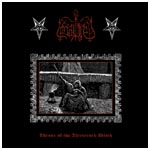 This little EP from Mare, one of the infamous Trondheim cults tends to sound a bit like Live in Leipzig era Mayhem recording in a sewer infested with rats and worms and the decrepit and rotten soundscape makes this one an aesthetically more attractive listen than most of the studio produced turds. Intuitively they grasp the idea of structuring long songs in the old Emperor vein so that while the bits and pieces are redundant, it is a journey through minimalist music themes into the realization and acceptance of the power of darkness. Slow, crawling, anti-logical repetition of simple melody (where the keyboards add a tasteful of old Enslaved) make it a bit of an un-musical experience – the composition seems to be mostly oriented to the fans of droning soundscape whereas the planning and calculation in the overstated reverb, vocal sound (while Kvitrim is good at pacing) and lack of invention in the riffs suggest seem to be aimed for the black metal consumer. But it is deconstructive, degenerate and deceitful music – for pure ideas, about as good as the best of the bunch reviewed here. An ambience and sense of space is reached, the Faustian concept of man as a warrior who travels and explores the universe, only to relinquish his individuality to the higher natural order – in death and rebirth.
This little EP from Mare, one of the infamous Trondheim cults tends to sound a bit like Live in Leipzig era Mayhem recording in a sewer infested with rats and worms and the decrepit and rotten soundscape makes this one an aesthetically more attractive listen than most of the studio produced turds. Intuitively they grasp the idea of structuring long songs in the old Emperor vein so that while the bits and pieces are redundant, it is a journey through minimalist music themes into the realization and acceptance of the power of darkness. Slow, crawling, anti-logical repetition of simple melody (where the keyboards add a tasteful of old Enslaved) make it a bit of an un-musical experience – the composition seems to be mostly oriented to the fans of droning soundscape whereas the planning and calculation in the overstated reverb, vocal sound (while Kvitrim is good at pacing) and lack of invention in the riffs suggest seem to be aimed for the black metal consumer. But it is deconstructive, degenerate and deceitful music – for pure ideas, about as good as the best of the bunch reviewed here. An ambience and sense of space is reached, the Faustian concept of man as a warrior who travels and explores the universe, only to relinquish his individuality to the higher natural order – in death and rebirth.
Written by Devamitra
1 CommentTags: Black Metal, death metal, Industrial, Norwegian Black Metal, Norwegian Death Metal, Thrash, zine-reviews
The Ugly Side of Life is Pure Beauty for the Hessian
There’s a very nice short story from the booklet of Burzum’s album Filosofem that reminds me a lot of the misunderstood path that the hessian chooses as life:
Creeping And Crawling, Rustling And Fluttering
There are two natural lights in this world, the sun and the moon. The first distorts the appearance of the other, often until it is unrecognizable. The sun gives us colour, warmth and clarity, while the moon gives us no colour, coldness and unclarity. We live in the sunlight, and we make artificial sunlight, after Arvakr and Alsvinnr, send by Sol, have drawn down the sun in sea in the West, because we like colour, warmth and clarity. The starting-point of our reality lies in this light; when Naglfaris’ wife, Night, comes, our world disappears in a certain way. She is illuminated by a light, that we don’t like, the colourless, cold and indistinct moonlight. Strange beings show themselves in the woods and the people draw back into their reliable, small houses. Out there, only the forces of darkness reign, yes, in the most true meaning of the word. The world becomes a total different one, for some the world becomes a place worth living. For those, who want to challenge these giants, who are brought to us by the moon in the shape of uncontrollable powers of nature, the world finally becomes a place really worth living in.
We live in a world where light and darkness interact with each other to conform the whole of the universe with both its living and inanimated elements.
Most people in our modern era would like to see only the light and forget about the other side of the coin. In this way, humans become self-centered and irresponsible as we mentally split from any notion that would seem scary or unconfortable. Hell, we don’t even watch the killing that takes place to put steaks on our table. Hence, most of us fail to see any connection(s) between our actions and the ensuing negative consequences towards our world. Ever wondered why human society is so fucked up, like the lyrics of Napalm Death, Morbid Angel, Slayer and countless other acts have been telling us throughout the years? Because society is essentially an undifferentiated mass of people that agree on very few things, many of them childish and self-destructive, like this mentality.
That’s what metal sought to fight by offering a morbid, depressing and yet very real view of the negative side that our enlightened, yet pussified society tries so pathetically to hide from: war, plague, death, blood, guts, natural selection, Satan, witchcraft, environmental death, stupid religions, stupid secular beliefs and so on and on, the purpose of it impeled by this one thought: that the only way to live sanely is to recognize both sides of the coin and embrace them as equal parts of existence.
That’s a perspective that has been from the very beginning of the metal genre. Even its forefathers had this very death metal view of life:
We’ve all got this opinion about the world today, you see. We’re aware that, at some time, a big change is going to come. With SAD WINGS OF DESTINY, we’re telling people to enjoy life, but at the same time be prepared for something that could happen. Tracks like ‘Genocide’, ‘Tyrant’, ‘Epitaph’ and ‘Prelude’ seem to us to follow this idea through – they act as possible preludes to this change…
(…)
We don’t want to be set up as prophets or disciples; we’re just five aware guys stuck in the middle of a lot of complacent people. Now everybody enjoys life, but we think it should be brought to people’s attention that, at any moment, we could all be wiped out… We’re far from being pessimists.
– Judas Priest’s interview with Sounds Magazine (May 8, 1976), Judas Priest Info Pages
Like the music they love, hessians firmly believe on the crude realities of individual mortality and the potential collective doom that could be triggered by our stupidity, irresponsibility and delusional beliefs: these are the strange beings that show themselves in the woods at night. Only instead of retreating to our comfy houses and pretend they don’t exist, we choose to face them.
It’s for this reason that hessians like to live their lives on the edge of things, sometimes by doing a lot of reckless behaviour, but mostly by having beliefs that are considered taboo by the majority of people. We embrace those taboos joyfully because they give life their meaning. Denying them is to deny life itself, and in this process we kill our souls and become faceless drones fighting for political power, money and other delusions given by the shadows cast by the fire in the chimneys of our warm, small and reliable houses.
Tags: zine-articles
Varg Gets out of the Can – Our Views and Thoughts
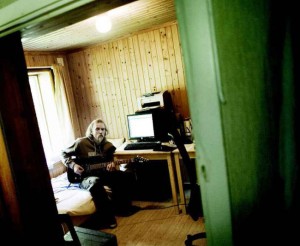 The release of Burzum’s mastermind Varg Vikernes from jail after fulfilling his sentence for the killing of his former friend and band partner Øystein Aarseth has raised a literal thunderstorm on the ethereal world of the net. The aforementioned phenomenon is not unusual if one knows the Internet and the people who frequent it, and was therefore easily predicted.
The release of Burzum’s mastermind Varg Vikernes from jail after fulfilling his sentence for the killing of his former friend and band partner Øystein Aarseth has raised a literal thunderstorm on the ethereal world of the net. The aforementioned phenomenon is not unusual if one knows the Internet and the people who frequent it, and was therefore easily predicted.
After all, the profile of someone like Varg – a convicted murderer (killing another human being is always bad, kids, remember that) with extreme political and racial views that don’t make him the most likeable person, at least for most people, and who gave many bogus declarations in the past (the ratio of truth vs. bullshit being relative depending on whether you’re talking with an admirer or a detractor) – is not the most favorable for a person with the truest intention to be left alone, but makes for great talking on message boards.
The thing about all the talking and bloviating is that, save for a small few who either don’t care or outright hate Varg’s music, most detractors will readily admit that the works under the Burzum moniker are worthy of consideration, and even of admiration. It’s like people still have a problem separating the person from his works.
But I’ll leave that well alone. The man’s release still needs to be commented because of the newest declarations made by Vikernes. Apparently, he will not completely shut himself from the world and will try to rekindle his music and writing careers.
After the years of continuous reunions from older, legendary bands being most of them complete flops and dissapointments, yours truly had virtually lost all faith in this phenomenon, until certain albums by certain bands like Celtic Frost and Beherit showed that reunions weren’t just mere vehicles to regain a fame and name that should have been better kept under wraps. The aforementioned acts actually showed a concern for metal’s artistic decadence and came back to prove how it’s really done (the tag of most reunions out there, but this time they really accomplished that).
Like Beherit’s, Burzum’s musical comeback should be taken with initial skepticism – after all, reunions and the like haven’t lost their essentially gimmicky nature -, but I really hope, having faith on the man’s talent and how it has maintained itself through the years, that he will be able to make an artistically honest effort that would contribute bringing metal back to life like Engram was.
In any case, one should also expect much on his future writing career, a topic that isn’t much talked about since Varg isn’t really famous for being a writer, having his music and all of the norwegian soap opera taken the forefront. It’s unfair, really, given that, despite the fact that Vikernes wasn’t a born writer, like his clumsy early essays prove, he has, throughout the years, developed an engaging style and it will be worthwhile to see what it results from that. That said, a book elaborating on scandinavian and related mythos, expanding on the short stories of Filosofem, for example, could be quite something. But, like life roughly teaches us, we should not get ahead of things and instead wait patiently.
A new Burzum album and one or two books worth considering is what’s on the future for Mr. Vikernes and the ones who might care. Oh, and there’s also a movie, but we won’t get into that…
No CommentsTags: burzum, varg vikernes, zine-articles
Metal complexity
In this world, people feel they gain social status by proving their music is the most unique in some way: most technical, most authentic, most profound, most novel, most antisocial, most ironic, or something. I’m sure there are a billion more categories I’m missing.
With this in mind, it’s clear why metalheads clash with other groups: other groups are trying to raise their own status by downing metal, and they’ll say anything — they don’t care if it’s true — to make metal look bad.
Metalheads are often confused about how to retort. Here’s a start.
What makes metal complex is not the technicality of the playing, or the speed, or the number of notes. Quite honestly, in each of those categories Andres Segovia and Julian Bream have everyone beat. Progressive rock bands like Yes come next, and somewhere in there are jazz and mathcore. Metal and rock aren’t really competing on that level, although sometimes they reach it.
Metal is complex because of its through-composed, narrative, motif-driven style that originates in the riff-based nature of metal, and approximates the style used in classical and early music. Each piece is like a little story, or poem, that goes from a starting point to an ending point through a topography of adventures. It’s not like rock, which is cyclic, or jazz, which is a background harmony over which random jamming makes a sort of texture. It’s like classical, where form meets message and each piece is both unique, and develops according to a structured format.
The only things that are close are ambient bands like Tangerine Dream and Fripp/Eno.
Theoretically speaking, on the level of songwriting, at its best this style of writing is brainier than jazz, rock, blues, etc. — not necessarily as technical or more technical, but perhaps a more intelligent and intense mode of composition. It’s why classical is always going to be at the top of the list for “this requires a big brain to pull it off.” But, metal and other narrative styled composers are up there too.
It’s also a lot harder to write well in this style, which is just about proven by the fact that metal bands are either instant classics or vanish into the pit of time. There’s little middle ground. You’re either Morbid Angel, or some doofus flash in the pan that everyone thinks is neat for about six weeks, and then no one can remember the name a year later.
No Comments
